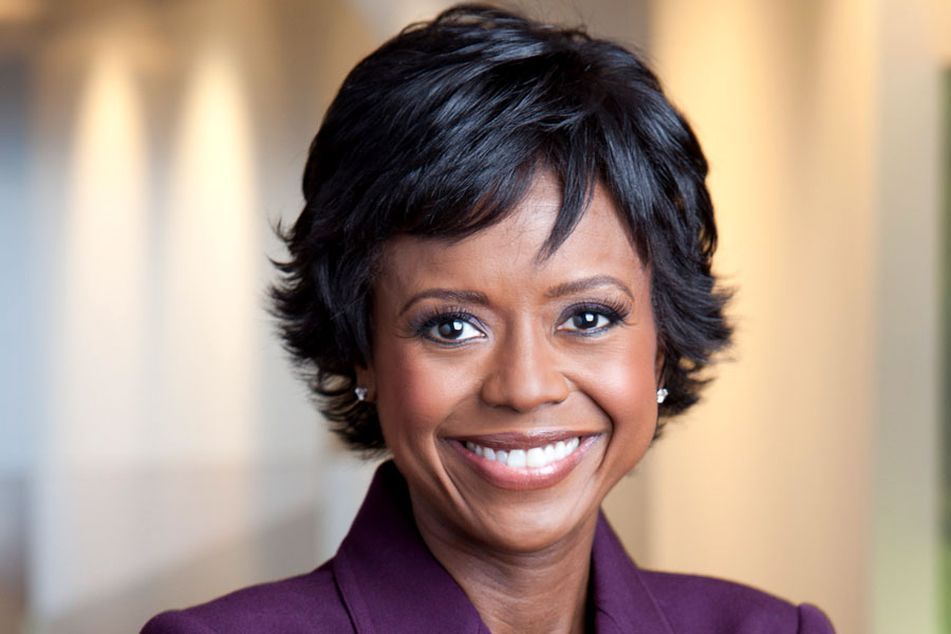Ariel’s Mellody Hobson says women, minorities should ‘speak their truth’ instead of trying to blend in

Co-CEO of the nation's largest black-owned money management firm talks about diversity, financial literacy, and watching movies with her husband, George Lucas
In July, Mellody Hobson was promoted to co-chief executive officer of Ariel Investments in Chicago, a company she initially joined as a college intern in 1989 and has served as president since 2000.
Ms. Hobson, 50, takes seriously her status as a role model for women and minorities in financial services, and she encourages others to “speak their truth” and not be too concerned about representing an outdated image of a financial services professional.
Now the largest shareholder of the $13 billion asset management firm founded by her co-CEO John Rogers, Ms. Hobson has never lost touch with her humble upbringing and the path she followed to get where she is today.
Jeff Benjamin: What kind of career goals did you have when you joined Ariel as a college intern?
Mellody Hobson: I had some very simple goals, which was to have a job. Where I came from, job security was not something to be taken for granted. I remember my mother telling me, ‘Make yourself indispensable so that they will keep you.’ And that’s exactly what I did.
JB: What attracted you to financial services and Ariel Investments?
MH: I was attracted to financial services because of the money situation when I was growing up. I was desperate to understand money. I tell people I do not think it was an accident that I ended up working in the financial services industry.
I ended up at Ariel because I had known and heard about John Rogers. In fact, my mother used to tell me that he was a wunderkind, and she was saying he’s really smart and he does something with the stock market. And when I interviewed for Princeton, he was the person running the schools committee, which was the program that puts alum in touch with students that are applying to Princeton.
[Recommended video: John Rogers strengthened diversity and inclusion efforts well beyond asset management]
JB: How is the co-CEO role designed to work?
MH: We are calling it the truth in labeling, because John and I have been co-leading this company for a very long time. I’ve been president for 19 years and I’ve been at Ariel for 28 years.
As our leadership evolved, I became responsible for everything outside of investing.
At the same time, John runs everything related to investing, and we made those divisions of our responsibilities years ago. I tell people, I make sure the train runs on time, and John’s the factory.
JB: When you were promoted to co-CEO, there were references to taking Ariel to the next level. What are your goals for Ariel?
MH: It’s not a secret that the industry has been transformed in recent years and a lot of that has to do with a number of forces at work, including active-versus-passive management. We’ve responded to those things like adding international and global, and expanding to a New York office.
Next year we will be opening an office in San Francisco.
We also think about having leaders that are domiciled in places other than our headquarters in Chicago.
When we talk about taking it to the next level, it is not about transforming Ariel into something else. We’re always focused on just being better at what we do and thinking through as the world evolves, have we evolved with it?
JB: Ariel is the nation’s largest minority-owned asset management firm. Does Ariel have a specific focus on employing and marketing to women and minorities?
MH: First of all, what I would say is we are an asset management firm that happens to be black-owned.
And we are a diverse firm in terms of the people inside of our organization. They come from countries all over the world, from all walks of life, from all different educational backgrounds. We are probably the most diverse asset management firm in the nation.
We do feel like we have an opportunity to speak to the audience that has been typically overlooked, specifically African Americans and, tangentially, women. Across the board we have women in very senior roles.
That’s unusual for a firm like ours, so I think we have a unique ability to communicate the importance of investing, to have considerations for the differences that exist or the perspectives that might be held by people of color or women that we can address.
JB: Why do you think the financial services industry isn’t more diverse in term of race and gender?
MH: It’s not just the financial services industry, it’s a lot of industries that need to do much better.
I think in the financial services industry, specifically you have to make sure that graduates have opportunities to intern.
We need more of those entry-level opportunities for people of color. We also need to understand that there are all sorts of jobs in financial services.
There is the possibility of getting fixated on one thing, like investment bankers or analysts. That is important, yes. But African Americans and Hispanics who see leadership at the tops of organizations in a variety of roles get excited about the company.
I think that’s one of the reasons that Ariel has been able to attract so many diverse people, because they’ve seen me and they’ve seen so many women and people of color. We have to give people examples.
And no more talk, we need action. The thing about the investment business, we get things done. We have a score every single day. We know how we’ve done against our benchmark.
And the thing about diversity, many conversations are about, ‘We’re working on it, we’re trying.’ But nowhere else in our business do we allow trying to be the outcome.
Don’t miss our Women Adviser Summit — coming to San Francisco.
JB: What advice would you give to a woman starting a career in financial services?
MH: I would say, you can stand out. I would say speak your truth and be bold with your ideas. I think sometimes we as women and minorities, we try to fit in. I think what made me successful at Ariel was my willingness to step out on the limb by myself with a point of view. It didn’t mean I was right all the time, but I had a point of view and was willing to take the risk.
At Ariel, we want those people all day long. And I would encourage women and people of color going into this industry to speak their truth. Put a stake in the ground of a good idea. Everyone loves good ideas.
JB: What are some of the things that need to be done to level the playing field in financial services for women and minorities?
MH: Everything from making sure we get the same opportunities, the same pay, making sure that unconscious bias doesn’t limit opportunities, that we really ask each other super hard questions about why certain people aren’t making it through.
I remember once at Ariel we did promotions and we promoted someone while she was on maternity leave, and people were shocked.
We weren’t going to wait a whole year to promote her just because she happened to be on maternity leave. These are not hard things.
JB: I know you’re passionate about financial literacy. Are you starting to see progress, with people generally making better financial decisions?
MH: We have a long, long way to go in financial literacy. People still don’t learn about investing in school in America, and as a result it puts you behind the eight ball. If you don’t grow up in a home where the stock market is discussed, it’s really hard to learn.
What is really challenging about this is we’re all being asked to make very important decisions about our financial future. We just need so much more when it comes to investor education and this industry is working really hard at that and seeing strides that have been made.
We’ve seen products changed to address the financial literacy issue, target-date funds being one of them.
JB: John Rogers describes you as a ‘seven-day-a-week person,’ regarding your long hours and work ethic. How do you keep up at that pace without burning out?
MH: I’m passionate about the work, and I have been my entire career. It’s never gotten boring to me. I wake up every single day with a great sense of urgency. I take it very seriously that we are taking care of people’s money.
JB: What do you do for fun and relaxation?
MH: I have a six-year-old daughter, and right now we’re making a house together out of found objects and cardboard. We just finished a bathroom, and I was very excited with myself because I figured out how to make the sink bowl out of the lid of a Starbucks cup.
And we see a lot of movies. We’re big moviegoers. Lately we’ve been on a kick of 1990s adventure movies that are mindless but really good. One that we saw recently was “Air Force One,” which holds up quite well.
JB: You’re married to filmmaker George Lucas, well-known for the Star Wars and Indiana Jones franchises. Do you watch a lot of your husband’s movies?
MH: I’ve seen “Star Wars” quite a few times, not because we watch it at home but because I’m always intrigued by George’s brain and the movie can be a window into it. He thinks very differently. I joke with people that I married Yoda’s dad.
Learn more about reprints and licensing for this article.








